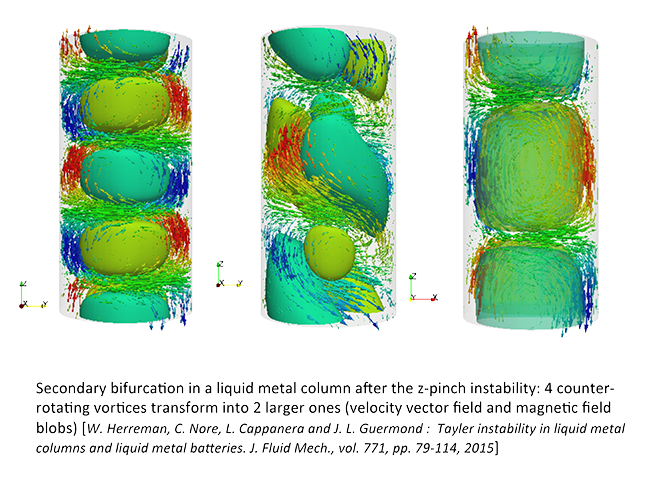Compulsory courses, M2 First semester, courses
Nonlinear physics and dynamical systems
The physics of so-called « complex » systems is based on a multitude of coexisting dynamic mechanisms, on a multiplicity of spatial or temporal scales, or on dynamics that are violently out of equilibrium. In this context, the linearization of problems, which makes powerful analytical mathematical tools available, becomes inoperative. Non-linear differential equations, for which there is no longer any basis for functional decomposition, since there is no longer any principle of superposition, require specific problem-solving techniques, either theoretically or experimentally. Nonlinear physics has no particular object of study. It brings together a culture and a set of theoretical and experimental tools that can be used in all disciplinary fields. For this reason, researchers with this background can be found in many different communities: biophysics, soft matter, hydrodynamics, economics, condensed matter, social theory, geosciences, atmospheric sciences, optics, acoustics, non-equilibrium statistical physics, etc.
For this reason, there is no fixed corpus associated with ‘Nonlinear Physics’. I have chosen to approach it from the point of view of hydrodynamics, elasticity and soft matter, i.e. by working on partial differential equations, to complement the rest of the curriculum. We willl start with… linear problems. Then we will consider weakly nonlinear developments and bifurcations. Then we will see the fundamental aspects of asymptotic calculus, singularities, self-similar solutions and their emergence. Finally, we will discuss the physics of dynamical systems, chaos and turbulence.
This outline, organized according to mathematical tools, will be associated with a second layer organising the visit of various modern problems in continuum mechanics.
Webpage (outline, bibliography, exercices, etc) :
 Bruno Andreotti
Bruno Andreotti
(Université Paris Cité)

Comments are closed


